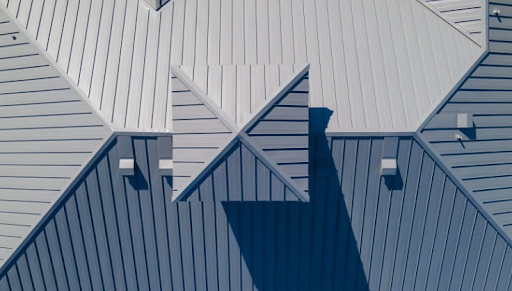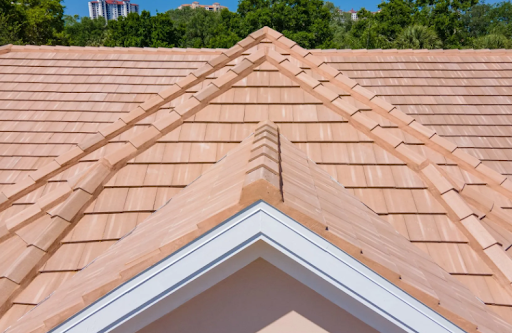Does Roof Color Affect Your House Temperature?

Your roof does more than just protect your home from the weather. It also plays a role in how warm or cool your house feels. One factor that many homeowners overlook is roof color. The color of your roof can impact the temperature inside your home, your energy bills, and your overall comfort. In sunny states like Florida, the effect can be even more noticeable.
In this blog, we’ll break down how roof color affects your house temperature, how it works with insulation and other factors, and what you should know when choosing the best color for your roof.
How Roof Color Influences Heat Gain
The difference between light and dark roof colors is more than cosmetic. It’s physics. Light roofs reflect more sunlight while dark roofs absorb more.
- Reflectance vs Absorptance: A light-colored roof surface reflects a higher percentage of solar radiation, which can lead to cooler temperatures. Dark surfaces absorb more of that energy, which can lead to higher temperatures.
- Heat transfer: Absorbed solar energy gets converted to heat, which then transfers into your attic or upper floors.
- Temperature difference: Roofs with dark colors can run significantly hotter than light roofs, around several tens of degrees more under direct sunlight. It can be 10–15 °F hotter in some cases.
- Climatic effect: In hot climates, darker colors can put stress on cooling systems due to more heat transfer. In cooler climates, a darker roof might help slightly during colder months, but disadvantage during warmer
What Roof Colors Tend to Perform Best

While there’s no one perfect color for every house, some shades generally outperform others in terms of keeping your home cooler:
- White or Cool White: Among the best for reflectivity. It bounces back much of the sun’s rays, keeping roof surfaces cooler.
- Light Gray, Light Tan, Beige: Very good alternatives. They reflect more than dark tones, yet may hide dirt or staining a little better than pure white.
- Medium hues (light blues, soft greens): With advanced reflective coatings, these can blend aesthetics with performance.
- Dark colors (black, dark gray, deep brown): Absorb most sunlight and convert it to heat. While some modern shingles incorporate reflective granules, dark roofs still tend to get noticeably warmer.
When choosing, it helps to look at a roof’s Solar Reflectance Index (SRI) or reflectivity rating. Many energy-efficient or “cool roof” products specify these metrics.
Why Color Isn’t the Only Factor
Color is important, but it doesn’t work alone. Several supporting elements influence how much of that rooftop heat actually gets inside your home:
Roofing Material & Texture
Some materials are naturally more reflective (metal, tile) or have properties that reduce heat transfer. Texture and granule composition also matter.
Reflective Coatings & Cool Roof Technologies
You can apply specialized coatings or use roof materials engineered with reflective pigments that help even darker roofs reflect more heat.
Insulation & Air Barrier
A roof might absorb heat, but good insulation and a well-sealed ceiling can block much of that heat from entering your living spaces.
Ventilation & Attic Airflow
A well-vented attic allows heat to escape instead of building up. Poor ventilation means even a light-colored roof can lead to excessive heat in your home.
Energy & Comfort Gains You Can Expect
Switching to a more reflective roof color or improving your roof system can yield meaningful benefits:
- Reduced cooling load: Many reports and studies suggest cooler roofs can cut energy used for air conditioning by 10–15% or more in warm climates.
- Lower roof surface temperatures: Reflective roofs may be tens of degrees cooler on hot days than their dark counterparts.
- Longer material lifespan: Less heat stress means less expansion, contraction, fading, or degradation over time.
- Better comfort: Rooms under the roof feel less overheated, especially on upper floors or attics.
Choosing the Best Color for Your Home
Choosing the best roof color involves more than just style. You’ll want to think about energy efficiency, your local climate, and how your roof interacts with sunlight year-round.
Here’s a quick summary of what to consider:
- Climate: If you live in a hot region, lean towards lighter shades. Lean towards darker shades in cooler regions.
- Aesthetics & neighborhood design: Match your home style or follow your HOA (Homeowner’s Association) rules.
- Material compatibility: Some materials, like tile, metal, or cool-shingle models, offer better reflectivity options.
- Maintenance & durability: Light-colored roofs are easy to stain, so regular maintenance matters to keep your home looking clean.
- Budget vs performance trade-offs: Energy-efficient roofs often cost more upfront, but they can lower your cooling bills over time. Cheaper options may save money now, but lead to higher energy costs later.
How Climate Zones Influence Roof Color Decisions
The color of your roof doesn’t just affect your home’s appearance, but it also interacts with your climate. Florida homeowners, especially in Southwest Florida, benefit more from light-colored or reflective roofing materials than those in cooler northern states.
Here’s why your climate matters:
- Hot climates: Roofs that reflect sunlight (light grays, whites, beiges, or even light greens) help reduce indoor heat gain. This lowers the demand on your air conditioning and cuts energy costs.
- Colder climates: In places that get long, snowy winters, darker roofs (black, dark brown, or charcoal) may be preferred. They absorb heat and help melt snow faster, preventing ice dams.
In coastal areas with high humidity, algae and mold are concerns, too. Choosing a light roof with an algae-resistant coating helps protect against staining and heat buildup.
Roof Color and Solar Panel Compatibility
If you’re thinking about installing solar panels now or in the future, your roof color can have an impact, though maybe not in the way you’d expect.
Here’s what to know:
- Dark roofs absorb more heat, which may increase the temperature underneath the solar panels. This can slightly reduce panel efficiency since solar cells perform better in cooler conditions.
- Light roofs reflect sunlight, which helps keep panels cooler. However, too much glare can sometimes create minor inefficiencies or interfere with panel alignment.
- Panel mounting and airflow often matter more than color. Installers usually leave a gap between the panel and the roof surface, which allows for cooling airflow regardless of color.
Which color works best?
- If you live in a hot climate like Florida, a lighter-colored roof with solar panels is typically the best combo for keeping your home cooler and maximizing solar performance.
- Pair your roof with solar-compatible materials like metal or cool shingles, which help manage heat and last longer under solar arrays.
How King Roofing Can Help
Choosing and installing a roof color that balances efficiency, durability, and style can be tricky. At King Roofing, we bring over 45 years of roofing experience to every project.
Here’s what you can expect from King Roofing:
- Roof color explained in plain terms: Understand how different shades influence heat absorption and attic temperatures.
- Color recommendations tailored to goals: Get help finding the right shade to balance curb appeal, energy efficiency, and budget.
- Material and color matched correctly: Ensure the chosen roof color complements the roofing material and performs well over time.
- Energy performance maximized: Combine the right roof color, material, and ventilation setup to cut down on cooling costs.
- Samples provided for real comparisons: See color choices in person to confidently select what works best for your home.
- Full project support from start to finish: From the initial inspection to the final installation, every step is handled with care.
Whether you’re replacing an old roof or planning a new build, we’re here to help you make the best decision for your home.
Ready to Make a Cooler, Smarter Roofing Choice?
Choosing the right roof color isn’t just about looks. It can help control your home’s temperature and energy use. If you’re planning a roof upgrade or building a new home, talk to a roofing expert about what makes the most sense for your climate, comfort, and budget.
At King Roofing, we help Florida homeowners choose roofs that last, look great, and help keep energy costs down. Contact us today. Let’s find the best roof color and material for your home.












